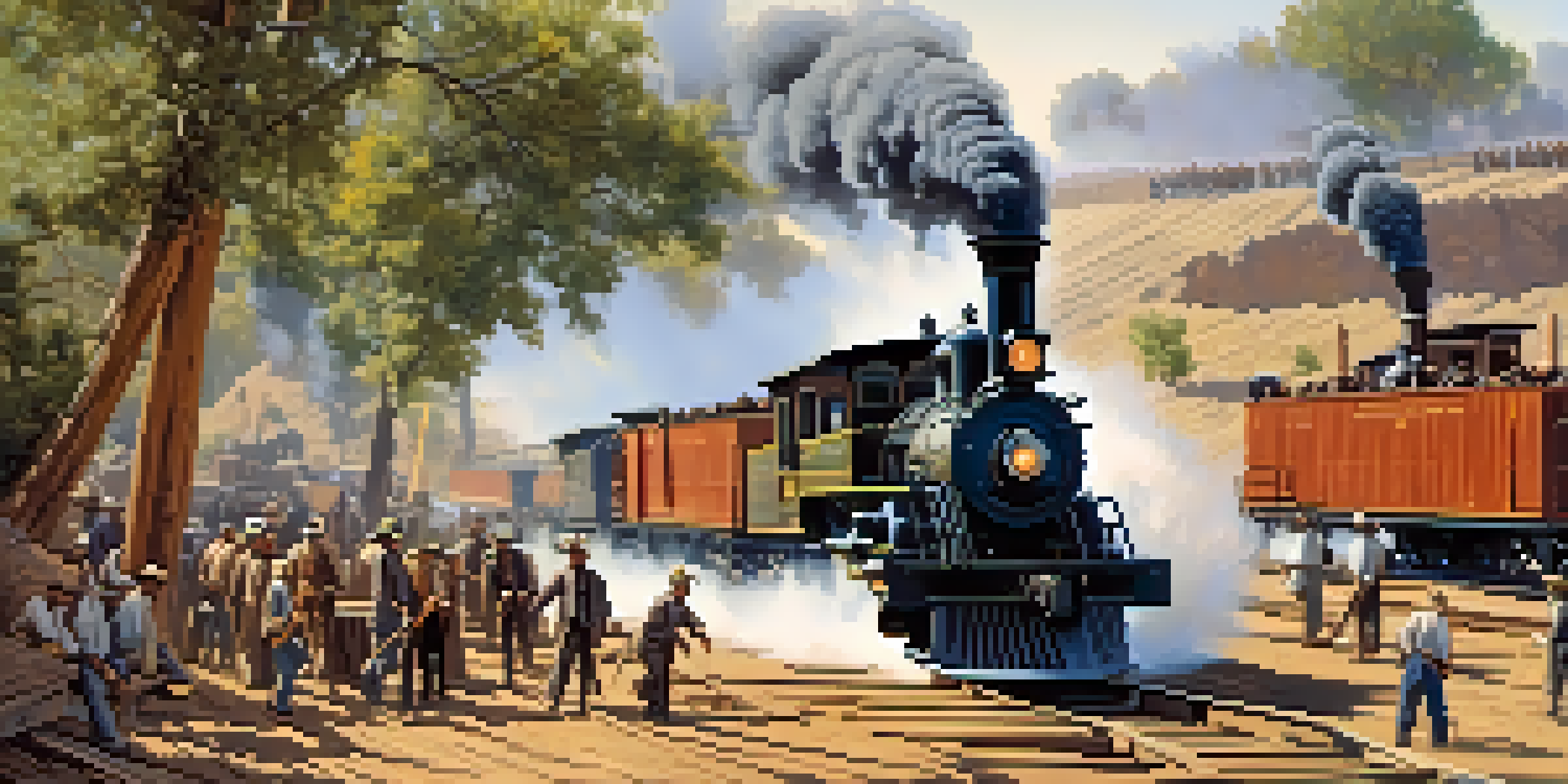The Transcontinental Railroad: A Milestone for Sacramento

Introduction to the Transcontinental Railroad
The Transcontinental Railroad was a monumental achievement in American history, completing a vital link between the east and west coasts. This engineering marvel not only transformed transportation but also reshaped the economic landscape of the nation. For Sacramento, the completion of this railroad in 1869 marked a new era, opening doors to opportunities previously deemed unreachable.
Sacramento's Role in the Railroad's Construction
Sacramento played a pivotal role in the construction of the Transcontinental Railroad, serving as a key hub for supplies and labor. The city became a bustling center for workers, merchants, and families drawn by the promise of the railroad. With its strategic location along the Sacramento River, it provided essential resources that fueled the ambitious project.
Transformative Role of Sacramento
Sacramento was a key hub in the construction of the Transcontinental Railroad, providing essential resources and labor that fueled this monumental project.
Economic Growth Driven by the Railroad
With the completion of the Transcontinental Railroad, Sacramento experienced an economic boom that transformed its community. The railroad enabled rapid transportation of goods, which helped local businesses thrive and attracted new industries. As agriculture flourished and trade expanded, Sacramento emerged as a critical player in the economy of California and beyond.
Impact on Population and Migration
The railroad not only brought economic growth but also spurred a significant increase in population. As news of job opportunities spread, thousands of settlers flocked to Sacramento, eager to build new lives. This influx of people contributed to the city’s cultural diversity, enriching the community with a variety of traditions and ideas.
Economic Boom Post-Railroad
The completion of the railroad sparked an economic surge in Sacramento, driving local business growth and attracting new industries.
Challenges Faced During Construction
While the railroad's completion was a triumph, it was not without its challenges. Workers faced harsh conditions, including difficult terrain and extreme weather, which made construction a grueling endeavor. Additionally, conflicts with Native American tribes and the toll of labor on immigrant workers highlighted the complexities behind this monumental project.
The Railroad's Lasting Legacy
The legacy of the Transcontinental Railroad is still felt today, as it laid the groundwork for modern transportation networks. It spurred infrastructure development and connected cities throughout the West, making travel and commerce more accessible. Sacramento, as a key player in this history, continues to benefit from the connections established by this transformative project.
Cultural Impact and Legacy
The Transcontinental Railroad not only transformed transportation but also enriched Sacramento's cultural diversity and left a lasting legacy celebrated through various events and historical sites.
Cultural Significance of the Railroad
The Transcontinental Railroad not only changed the economy but also left a profound cultural impact. It became a symbol of progress and innovation, inspiring stories and narratives that celebrate human ingenuity. In Sacramento, the railroad's legacy is commemorated through various cultural events and historical sites that educate visitors about this transformative era.
Conclusion: Sacramento's Continued Growth
Today, Sacramento stands as a testament to the enduring impact of the Transcontinental Railroad. The city's growth and development can be traced back to this pivotal moment in history, showcasing its resilience and adaptability. As we look to the future, the foundational changes brought about by the railroad continue to shape Sacramento's identity and opportunities.